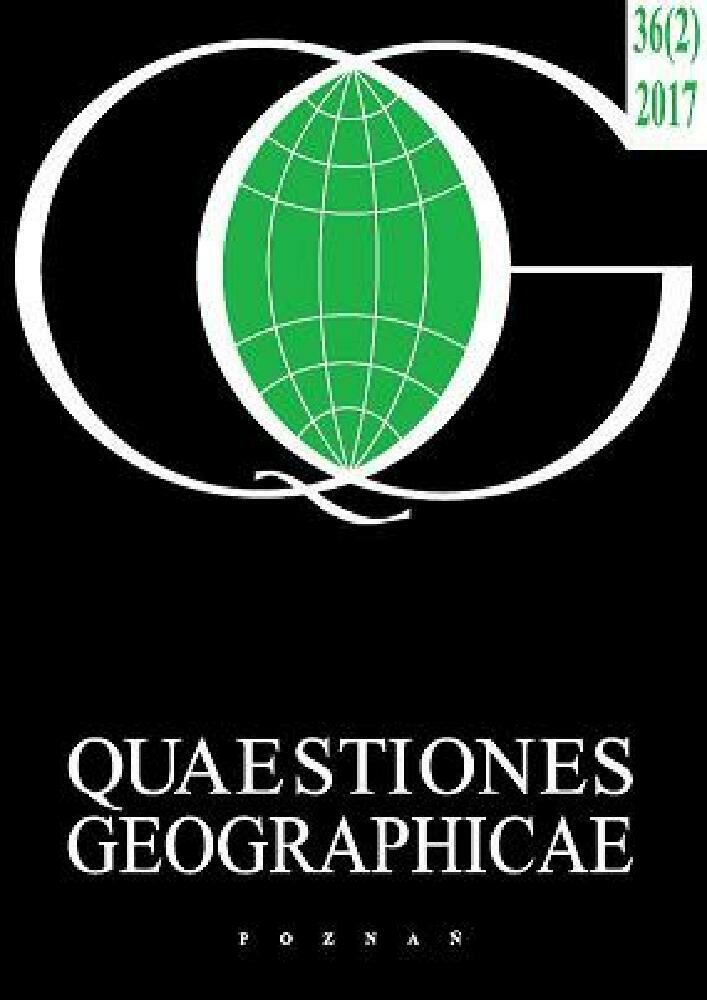Abstract
The paper deals with the spatial diversification of energy crops and their concentration in the Polish agriculture. The analysis of changes in territorial patterns regarding those plantations involves natural factors, effects of urbanisation, and the level of absorption of European Union funds. The concentration of plantations is presented by means of local spatial correlations of energy crops; for the purposes of this research, local Moran’s statistic (Ii) has also been employed.
References
Anselin L., 1988. Spatial econometrics: Methods and models. Kluwer, Dordrecht.
Anselin L., 1995. Local Indicators of Spatial Association – LISA. Geographical Analysis 27: 93–115.
Bivand R., 1980. Autokorelacja przestrzenna a metody analizy statystycznej w geografii (Spatial autocorrelation and methods of statistical analysis in geography). In: Chojnicki Z. (ed.), Analiza regresji w geografii. PWN, Poznań: 23–38.
Celińska A., 2009. Charakterystyka różnych gatunków roślin energetycznych w aspekcie ich wykorzystania w energetyce zawodowej (Characteristics of various species of energy plants in terms of their use in the power industry). Polityka Energetyczna 1, 1/2: 59–72.
Cliff A.D., Ord J.K., 1973. Spatial autocorrelation. Pion, London.
Directive 2009/28/EC of the European Parliament and of the Council of 23 April 2009 on the promotion of the use of energy from renewable sources. Official Journal of the European Union 5.6.2009.
Kossowski T., Perdał R., 2014. Wykorzystanie metod ekonometrii przestrzennej do analizy procesów koncentracji w rolnictwie polskim (Use of spatial econometric methods to analyse concentration processes in Polish agriculture). In: Głębocki B. (ed.), Zróżnicowanie przestrzenne rolnictwa. GUS, Warszawa: 466–487.
Presidency conclusions of the European Council held in Brussels on 8–9 March 2007; 7224/1/07 REV 1http://register.consilium.europa.eu/doc/srv?l=EN&f=ST%207224%202007%20REV%201 (accessed February 2015).
Racine J.B., Reymond H. 1977. Analiza ilościowa w geografii (Quantitative analysis in geography). PWN, Warszawa.
Regulation of the Minister of Economy and Labour of 9 December 2004 on a detailed scope of obligations to procure electrical energy and thermal energy produced from renewable energy sources. Journal of Laws of 2004, No. 267, item 2656.
Rudnicki R., 2009. Renty strukturalne jako czynnik przemian agrarnych i demograficznych w rolnictwie polskim w latach 2004–2006 (Structural pensions as a factor of agrarian and demographic changes in Polish agriculture in the years 2004–2006). Bogucki Wydawnictwo Naukowe, Poznań.
Rudnicki R., 2014a. Analiza absorpcji środków WPR i ich wpływu na zmiany strukturalne w rolnictwie polskim (Analysis of CAP funds and their effect on structural changes in Polish agriculture). In: Głębocki B. (ed.), Zróżnicowanie przestrzenne rolnictwa. GUS, Warszawa: 441–463.
Rudnicki R., 2014b. Changes in the land use structure of agricultural holdings in Poland in the light of comparative analysis of National Agricultural Censuses of 2002 and 2010. In: Kamińska W., Heffner K. (eds), Rural development and EU Cohesion Policy. Studia Regionalia KPZK PAN 39, Warszawa: 153–182.
Runge J., 2007. Metody badań w geografii społeczno-ekonomicznej – element metodologii, wybrane narzędzia badawcze (Research methods in socio-economic geography: Elements of methodology and selected research tools). Wydawnictwo Uniwersytetu Śląskiego, Katowice.
Tobler W., 1970. A computer movie simulating urban growth in the Detroit region. Economic Geography 46(2): 234–240.
Wiesenthal T., Wourelatou A., Petersen J.E., Taylor P., 2006. How much bioenergy can Europe produce without harming the environment? http://reports.eea.europa.eu/eea_report_2006_7/en (accessed February 2015).
Zarys kierunków rozwoju obszarów wiejskich (Outline of the development of rural areas), 2009. Ministry of Agriculture and Rural Development, Warszawa.
